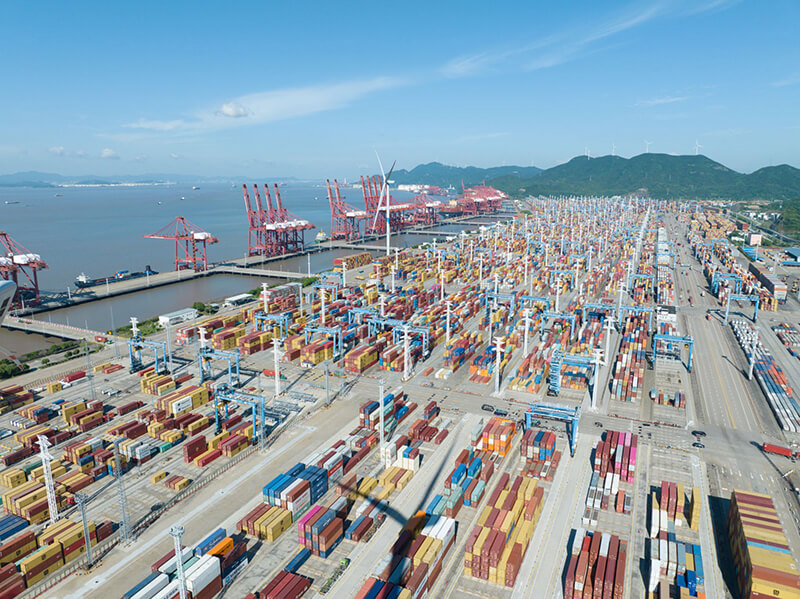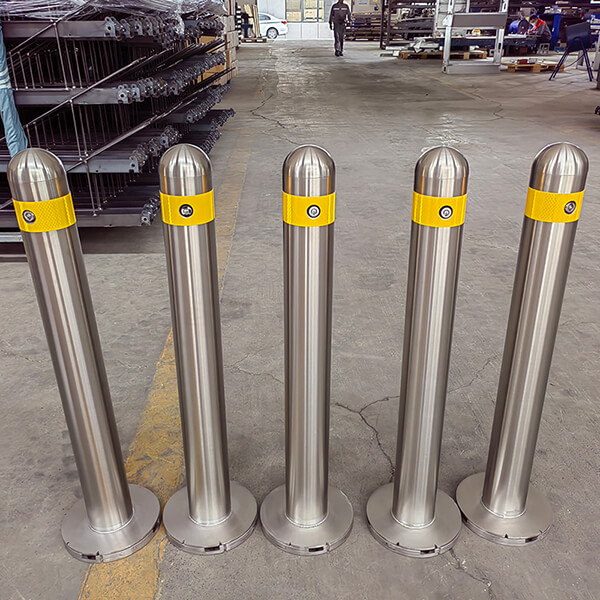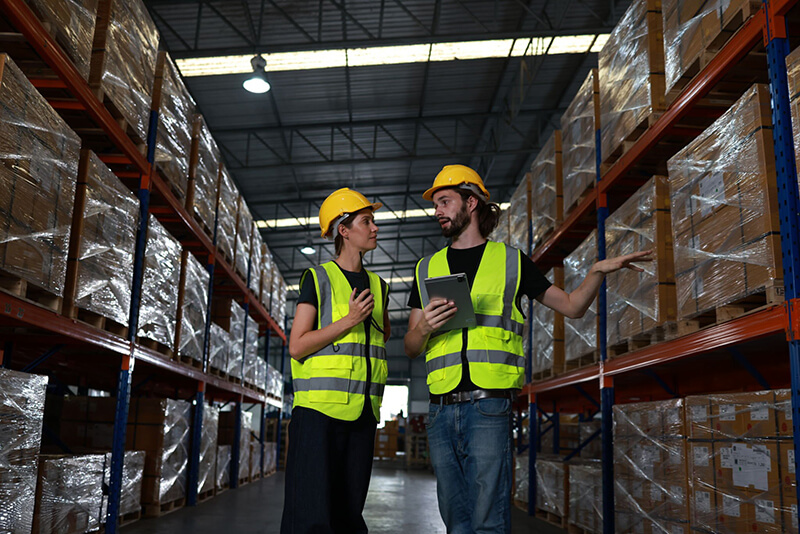Introduction
How to import safety bollards from China is a process that can significantly benefit your business by providing cost-effective, high-quality products for various safety applications.
Whether you’re in the construction industry, managing public spaces, or involved in traffic management, safety bollards play a crucial role in ensuring security and order.
Importing these from China can offer numerous advantages, but it also requires careful planning and knowledge of the steps involved.
Why Import from China?

- Cost-Effectiveness: China is known for its ability to produce goods at a lower cost due to its vast manufacturing capabilities and economies of scale. This cost advantage can significantly increase your profit margins.
- High-Quality Production: Despite common misconceptions, many Chinese manufacturers produce high-quality safety bollards that meet international standards. With proper supplier selection, you can ensure that you receive products that are both durable and reliable.
- Customization Options: Chinese manufacturers often offer extensive customization options, allowing you to order safety bollards tailored to your specific needs, whether in terms of size, material, or design.
By understanding the process of how to import safety bollards from China, you can leverage these benefits to enhance your business operations and meet the growing demand for safety solutions in various sectors.
The following sections will guide you through each step of the importing process, ensuring that you can navigate the complexities with confidence and success.
Understanding Legal and Regulatory Requirements
Successfully navigating the process of how to import safety bollards from China requires a solid understanding of the legal and regulatory landscape. Compliance with import regulations is crucial to avoid delays, additional costs, or even legal penalties. Here’s what you need to know:
Researching Import Regulations
Before importing safety bollards, you must familiarize yourself with the specific import regulations applicable in your country. Each country has its own set of rules governing the importation of safety equipment, including standards for product quality, labeling, and environmental impact. Key points to consider:
- National and International Standards: Ensure that the safety bollards you plan to import meet both national and international safety standards. This could include ISO certifications, CE markings (for Europe), or UL listings (for the USA).
- Customs Requirements: Research the documentation required by customs authorities, such as import permits, product declarations, and safety certifications. These documents are essential to smooth customs clearance.
- Compliance Checks: Regularly consult with your country’s customs office or a customs broker to stay updated on any changes in import regulations or new compliance requirements.
Identifying Prohibited and Restricted Items
Not all products are allowed entry into every country. Before finalizing your import plans, it’s essential to ensure that safety bollards are not classified as restricted or prohibited items:
- Check Prohibited Lists: Refer to the official list of prohibited imports provided by your government or relevant regulatory bodies. This list will outline products that cannot be imported under any circumstances.
- Restricted Items: Some items might be allowed under specific conditions, such as obtaining special permits or adhering to strict regulations. Make sure to identify if your safety bollards fall under this category.
- Use of Tools and Resources: Utilize government websites, customs databases, or consult with trade experts to verify whether your products are subject to any restrictions.
Understanding and adhering to these legal and regulatory requirements is a critical step in the process of how to import safety bollards from China. By ensuring compliance, you can avoid costly delays, penalties, and ensure that your products enter the market legally and efficiently.
Selecting a Reliable Supplier

One of the most critical steps in how to import safety bollards from China is selecting a reliable supplier. The quality of your products, the smoothness of the import process, and ultimately the success of your business depend heavily on the supplier you choose. Here’s how to ensure you find the right partner.
How to Find the Right Supplier in China
Identifying a trustworthy supplier requires thorough research and careful consideration. Here are some effective strategies to find the best supplier for your safety bollards:
- Online Marketplaces: Platforms like Google Search,Alibaba, Global Sources, and Made-in-China are excellent starting points. These websites list thousands of suppliers and offer filters to narrow down your search based on product specifications, certification, and reviews.
- Trade Shows: Attend trade fairs such as the Canton Fair or China International Import Expo. These events provide an opportunity to meet potential suppliers in person, see product samples, and discuss your specific needs directly.
- Referrals: Ask for recommendations from industry colleagues or use sourcing agents who have established networks with reputable manufacturers. Referrals can save time and help avoid unreliable suppliers.
Evaluating Supplier Reliability and Quality

Once you have identified potential suppliers, it’s crucial to evaluate their reliability and the quality of their products. Here’s how:
- Request Product Samples: Always request samples before placing a large order. Inspect these samples for material quality, durability, and adherence to your specifications. This step is essential to ensure the safety bollards meet your standards.
- Factory Visits: If possible, visit the supplier’s factory. A firsthand look at the production process, quality control measures, and working conditions can provide valuable insights into the supplier’s capabilities and reliability.
- Verify Credentials: Check the supplier’s certifications and licenses to ensure they comply with international standards. Look for ISO certifications, CE markings, or other relevant certifications that indicate the supplier’s commitment to quality and compliance.
Building a Long-Term Relationship
Establishing a long-term relationship with a reliable supplier can offer significant benefits, including better pricing, consistent quality, and more flexible payment terms. To foster this relationship:
- Clear Communication: Maintain open and clear communication with your supplier. Discuss your expectations, specifications, and any concerns promptly to avoid misunderstandings.
- Regular Orders: Consider placing smaller, regular orders rather than one large order. This approach can help build trust and allow you to monitor the supplier’s consistency over time.
- Mutual Respect: Treat your supplier as a partner rather than just a vendor. Building mutual respect and understanding can lead to better cooperation and more favorable terms in the long run.
Selecting a reliable supplier is a foundational step in how to import safety bollards from China. By carefully choosing and evaluating your suppliers, you can ensure that you receive high-quality products and maintain a smooth import process.
Contracting and Negotiating with Suppliers
After identifying and selecting a reliable supplier, the next crucial step in how to import safety bollards from China is contracting and negotiating with them. A well-drafted contract and effective negotiation ensure that both parties are clear about the terms, reducing the risk of misunderstandings and disputes.
Drafting a Detailed Sales Contract
A comprehensive sales contract is essential to protect your interests and ensure that the supplier delivers exactly what you expect. Here are the key elements to include:
- Product Specifications: Clearly define every detail of the safety bollards, including materials, dimensions, color, and any custom features. Use precise language to avoid any ambiguity.
- Quality Control Measures: Specify the quality standards that the safety bollards must meet. Include details about any third-party inspections or testing that must be conducted before shipment.
- Payment Terms: Outline the payment schedule, including deposits, milestones, and final payment. Common terms include paying 20%-30% upfront and the remainder upon shipment or after inspection.
- Delivery Schedule: Set clear timelines for production, inspection, and delivery. Include penalties for delays to ensure the supplier adheres to the agreed timeline.
- Return and Compensation Policies: Include clauses that protect you in case the delivered products do not meet the agreed specifications. Specify the conditions under which you can return products and how compensation will be handled.
Negotiating Terms and Conditions
Negotiation is a key part of the contracting process and can significantly impact the overall cost and success of your import. Here are some tips for effective negotiation:
- Leverage Order Volume: If you are placing a large order, use this as leverage to negotiate better pricing, discounts, or more favorable payment terms. Suppliers are often willing to offer better terms for larger, consistent orders.
- Flexible Payment Terms: Negotiate payment terms that align with your cash flow. For example, you might negotiate to pay a smaller deposit and negotiate how the balance will be paid.
- Shipping and Handling: Negotiate the Incoterms (International Commercial Terms) that determine who is responsible for shipping and handling costs. FOB (Free on Board) is often a good choice, as it gives you control over the shipping process while the supplier handles the loading.
- Customization Requests: If you require specific customizations for your safety bollards, discuss these in detail during the negotiation process. Make sure the supplier understands your requirements and agrees to them in writing.
Importance of Clear Communication
Clear communication is critical throughout the contracting and negotiating process. It ensures that both parties understand the expectations and can work towards a mutually beneficial relationship. Here’s how to maintain clear communication:
- Document Everything: Keep written records of all communications, agreements, and changes to the contract. This documentation can be crucial in resolving any disputes that arise.
- Regular Updates: Stay in regular contact with the supplier to monitor the progress of your order. Request updates on production, inspection, and shipping to ensure everything stays on track.
- Cultural Sensitivity: Be aware of cultural differences in communication and negotiation styles. Understanding and respecting these differences can help build a stronger relationship with your supplier.
By drafting a detailed contract and negotiating effectively, you can ensure that your import of safety bollards from China proceeds smoothly and meets your expectations. This step is essential for minimizing risks and securing a successful outcome.
Shipping and Logistics Management
Effective shipping and logistics management is crucial in how to import safety bollards from China. This phase involves selecting the right shipping method, understanding Incoterms, and managing transit times and costs to ensure your products arrive safely, on time, and within budget.
Choosing the Right Shipping Method

The shipping method you choose can significantly impact both the cost and speed of delivery. Here are the most common options:
- Sea Freight: Ideal for large, heavy shipments like safety bollards. Sea freight is cost-effective but slower, typically taking several weeks to reach its destination. It’s a good option if your delivery timeline is flexible.
- Air Freight: Faster than sea freight, air freight is best for smaller, time-sensitive shipments. However, it is more expensive, making it less suitable for bulk orders.
- Courier Services: Best for small, high-value items. Courier services like DHL, FedEx, or UPS offer door-to-door delivery and are fast, but they come with higher costs. This method is rarely used for large shipments like safety bollards due to its high cost.
Understanding Incoterms and Freight Forwarding
Incoterms (International Commercial Terms) are a set of predefined international rules that clarify the responsibilities of buyers and sellers in international trade. Choosing the right Incoterm is critical in defining who is responsible for shipping costs, insurance, and risk.
Common Incoterms include:
- FOB (Free on Board): The seller is responsible for delivering the goods to the port and loading them onto the ship. The buyer takes over responsibility once the goods are on board. FOB is often preferred because it gives the buyer more control over shipping and insurance.
- EXW (Ex Works): The buyer bears all costs and risks from the seller’s premises to the final destination. While EXW offers minimal seller involvement, it places a greater burden on the buyer, especially for international logistics.
- CIF (Cost, Insurance, and Freight): The seller covers the cost of the goods, insurance, and freight to the destination port. The buyer is responsible for customs clearance and delivery beyond the port. CIF provides more convenience but at a higher cost.
Role of Freight Forwarders
A freight forwarder can be invaluable in managing the logistics of your import. They handle the complexities of shipping, including documentation, customs clearance, and coordination with carriers. Key benefits of using a freight forwarder include:
- Simplified Process: Freight forwarders manage the entire shipping process, reducing the logistical burden on you.
- Cost Savings: They often have established relationships with carriers, which can lead to better rates and more efficient shipping solutions.
- Expertise: Freight forwarders are knowledgeable about international trade regulations, ensuring compliance and reducing the risk of delays or penalties.
Managing Transit Times and Costs
Properly managing transit times and costs is essential to keep your import on schedule and within budget. Here’s how:
- Plan Ahead: Begin planning your shipments well in advance. This includes booking space on vessels or planes and arranging inland transportation. Planning ahead helps avoid last-minute costs and ensures timely delivery.
- Consider the General Rate Increase (GRI): The GRI is a periodic adjustment in shipping rates, often implemented by carriers at the start of each month. To avoid unexpected cost increases, plan your shipments to avoid peak GRI periods or negotiate rates with your freight forwarder.
- Monitor Shipping Progress: Keep track of your shipment’s progress throughout its journey. Use tracking systems provided by your freight forwarder or carrier to stay informed of any delays and take corrective action if necessary.
Shipping and logistics management is a critical component of how to import safety bollards from China. By carefully choosing your shipping method, understanding Incoterms, and managing transit times and costs, you can ensure a smooth and efficient import process, minimizing risks and maximizing cost-effectiveness.
Receiving and Inspecting the Goods
The final step in how to import safety bollards from China involves receiving the goods and conducting a thorough inspection. This step ensures that the products meet the agreed-upon specifications and that there are no issues that could affect their functionality or safety.
Customs Clearance and Import Duties
Once your safety bollards arrive at the destination port, they must go through customs clearance before being released for delivery. Here’s what you need to know:
- Prepare Necessary Documentation: Ensure all required documents, such as the bill of lading, commercial invoice, packing list, and certificates of origin, are prepared and accurate. Any discrepancies can lead to delays or additional inspections.
- Understand Tariff Classifications: Accurately classify your goods under the correct tariff codes to determine the appropriate import duties and taxes. Misclassification can result in penalties or increased costs.
- Hire a Customs Broker: Consider using a customs broker to navigate the complexities of customs clearance. They can handle documentation, communicate with customs authorities, and ensure that duties are calculated correctly.

Inspecting and Verifying Product Quality
After clearing customs, the next critical step is to inspect the safety bollards to ensure they meet the quality standards specified in your contract. Key actions include:
- Visual Inspection: Check for any visible damage or defects that may have occurred during shipping. Look for issues such as dents, scratches, or signs of poor workmanship.
- Dimensional Checks: Verify that the bollards meet the specified dimensions, weight, and material composition. Any deviations from the agreed specifications should be documented and reported immediately.
- Functionality Testing: Depending on the design and purpose of the bollards, conduct functional tests to ensure they perform as expected. This could include testing the impact resistance, anchoring mechanisms, or reflective properties.
- Third-Party Inspection Services: If you opted for third-party inspections, review the reports provided to ensure that all criteria were met before the goods were shipped. These inspections can provide an additional layer of assurance regarding the quality of the products.
Handling Discrepancies
Despite thorough planning and communication, discrepancies between the received goods and the agreed-upon specifications can occur. Here’s how to handle such situations:
- Document the Issues: Take detailed notes and photographs of any defects or non-compliance with the contract terms. This documentation will be crucial if you need to file a claim.
- Communicate with the Supplier: Contact the supplier immediately to report the issues. Provide all relevant documentation and discuss possible solutions, such as replacements, repairs, or partial refunds.
- Leverage Your Contract: Refer to the compensation and return policies outlined in your contract. Use these terms to negotiate a resolution that minimizes your losses and ensures you receive the products you ordered.
Final Steps and Preparation for Distribution
Once the inspection is complete and any discrepancies are resolved, you can proceed with the distribution or installation of the safety bollards. Key final steps include:
- Organize Storage: If the bollards are not immediately needed, ensure they are stored in a suitable environment that protects them from damage or deterioration.
- Plan for Installation: Coordinate with your team or contractors to schedule the installation of the bollards. Ensure that all necessary tools and materials are ready to avoid delays.
- Prepare for Future Orders: Reflect on the entire import process and identify any areas for improvement. Establish a timeline for future orders to maintain a consistent supply of safety bollards.
By meticulously managing the receiving and inspecting process, you ensure that the safety bollards you import from China meet your expectations and are ready for use or sale. This final step is crucial to safeguarding your investment and maintaining the quality standards your business depends on.




